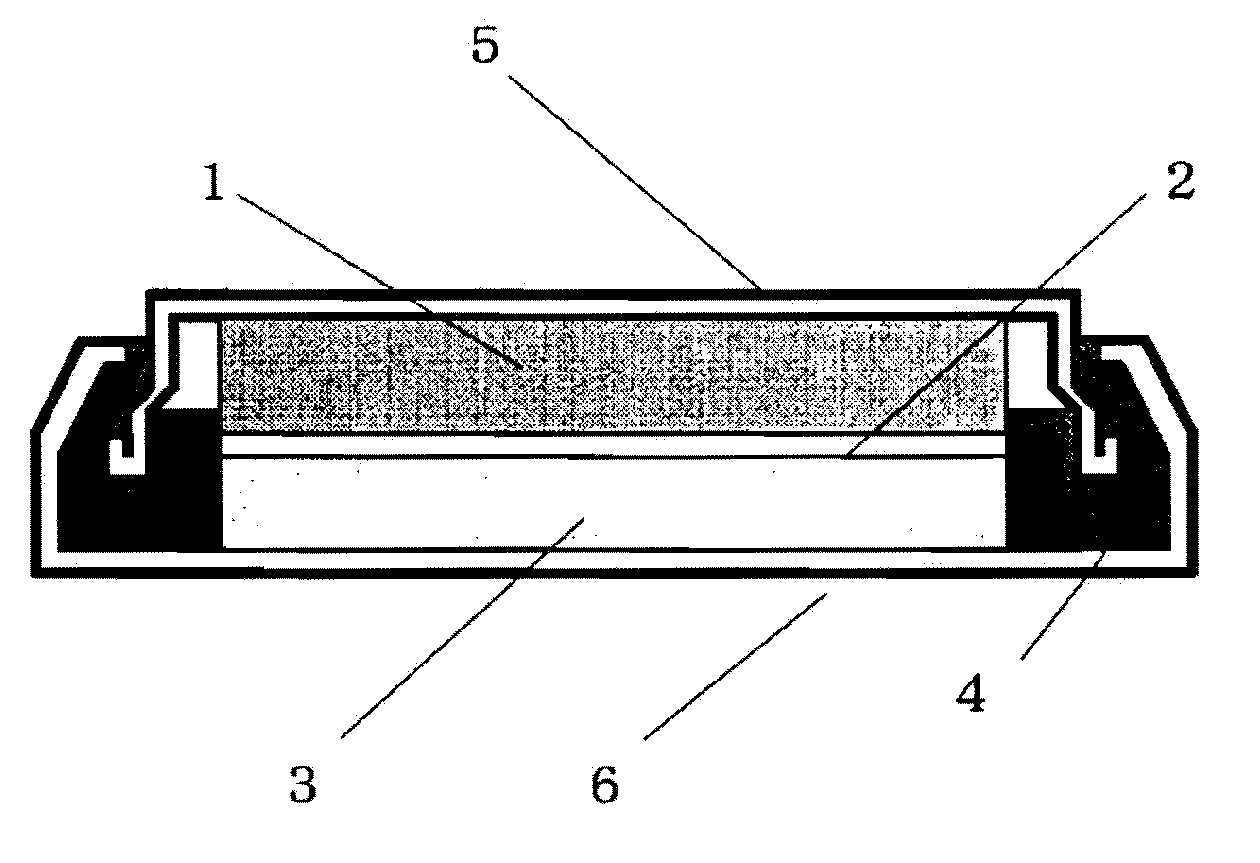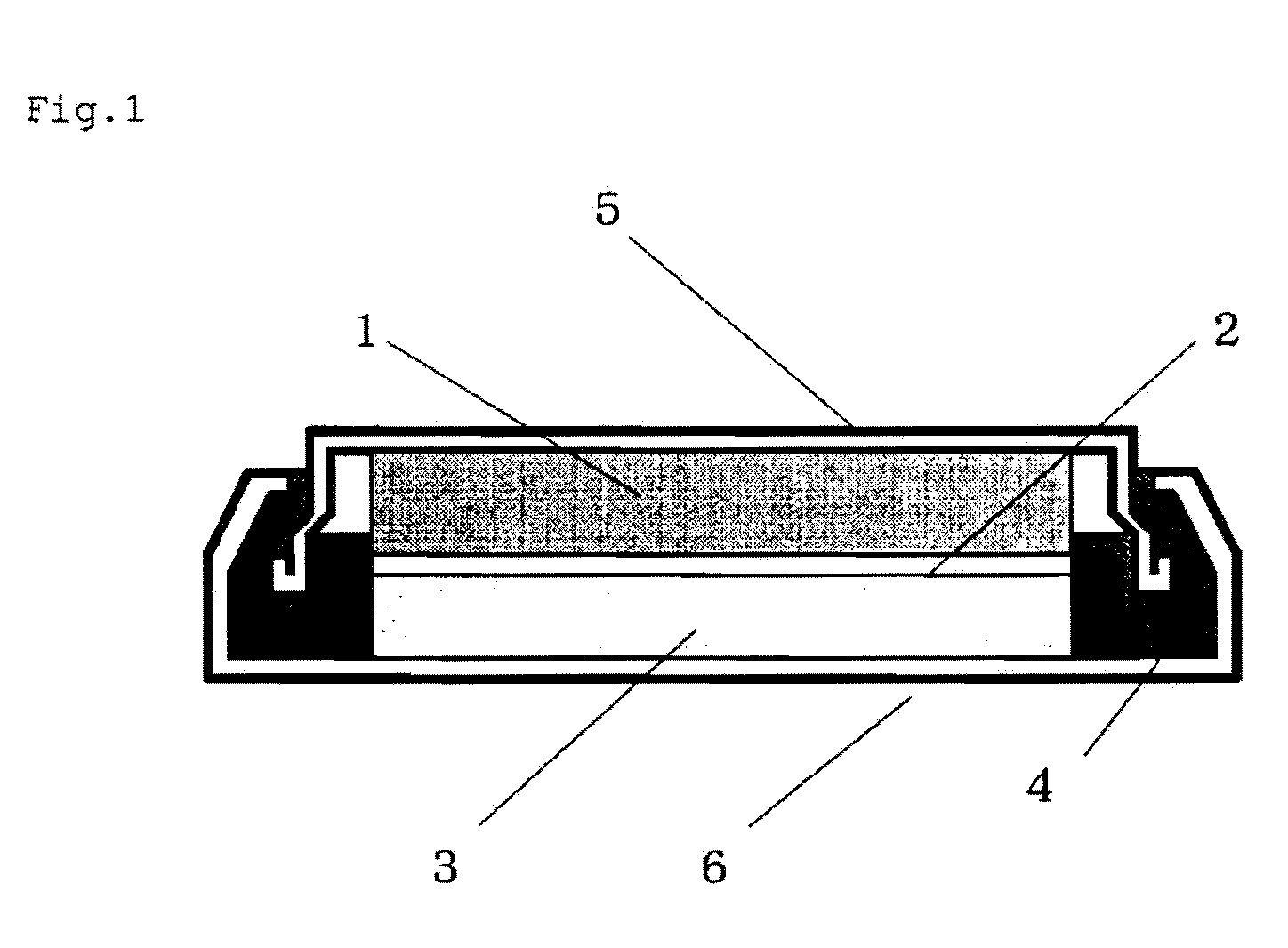Positive electrode active material for non-aqueous electrolyte secondary battery, method for producing same and non-aqueous electrolyte secondary battery using same
a technology of non-aqueous electrolyte and active material, which is applied in the direction of nickel oxide/hydroxide, cell components, nickel compounds, etc., can solve the problems of lithium manganate, high cost of lithium cobaltate, and large price fluctuation, etc., to achieve high capacity and heat stability, high output, and high productivity.
- Summary
- Abstract
- Description
- Claims
- Application Information
AI Technical Summary
Benefits of technology
Problems solved by technology
Method used
Image
Examples
example 1
[0125]A positive electrode active material composed of a lithium nickel composite oxide was produced by the following series of steps including the step for preparing a nickel hydroxide having predetermined composition, the step for preparing fired powder having predetermined composition, and the step for water washing treatment the resultant fired powder and then drying, and still more by preparing a coin battery using this as a positive electrode material, it was evaluated using impedance.
[0126]It should be noted that each raw material was weighed so that molar ratio of each metal component of the lithium nickel composite oxide becomes Ni:Co:Al:Li=0.82:0.15:0.03:1.02.
(1) The Step for Preparing a Nickel Hydroxide
[0127]Firstly, an aqueous solution was produced by mixing nickel sulfate hexahydrate (produced by Wako Pure Chemical Industries, Ltd.), cobalt sulfate heptahydrate (produced by Wako Pure Chemical Industries, Ltd.) and aluminum sulfate (produced by Wako Pure Chemical Industr...
example 2
[0138]A lithium nickel composite oxide was produced by performing similarly as in Example 1, except that, instead of nickel hydroxide obtained by (1) the preparation step of nickel hydroxide of Example 1, nickel oxyhydroxide was used, which was obtained by still more oxidation treatment of nickel hydroxide by adding sodium hypochlorite. Results of measuring composition, amount of lithium at the surface, and specific surface area of the resultant powder, as well as impedance and generation amount of gas during storage at high temperature of the battery are shown in Tables 1 and 2. It should be noted that nickel the resultant lithium nickel composite oxide was confirmed to be a single phase of the lithium nickel composite oxide, by powder X-ray diffraction using Cu—Kα ray.
example 3
[0139]A lithium nickel composite oxide was produced by performing similarly as in Example 1, except that, nickel hydroxide obtained by (1) the preparation step of nickel hydroxide of Example 1, was oxidation roasted at 900° C. Results of measuring composition, amount of lithium at the surface, and specific surface area of the resultant powder, as well as impedance and generation amount of gas during storage at high temperature of the battery are shown in Tables 1 and 2. It should be noted that the resultant lithium nickel composite oxide was confirmed to be a single phase of the lithium nickel composite oxide, by powder X-ray diffraction using Cu—Kα ray.
PUM
| Property | Measurement | Unit |
|---|---|---|
| temperature | aaaaa | aaaaa |
| temperature | aaaaa | aaaaa |
| molar ratio | aaaaa | aaaaa |
Abstract
Description
Claims
Application Information
 Login to View More
Login to View More - R&D
- Intellectual Property
- Life Sciences
- Materials
- Tech Scout
- Unparalleled Data Quality
- Higher Quality Content
- 60% Fewer Hallucinations
Browse by: Latest US Patents, China's latest patents, Technical Efficacy Thesaurus, Application Domain, Technology Topic, Popular Technical Reports.
© 2025 PatSnap. All rights reserved.Legal|Privacy policy|Modern Slavery Act Transparency Statement|Sitemap|About US| Contact US: help@patsnap.com


